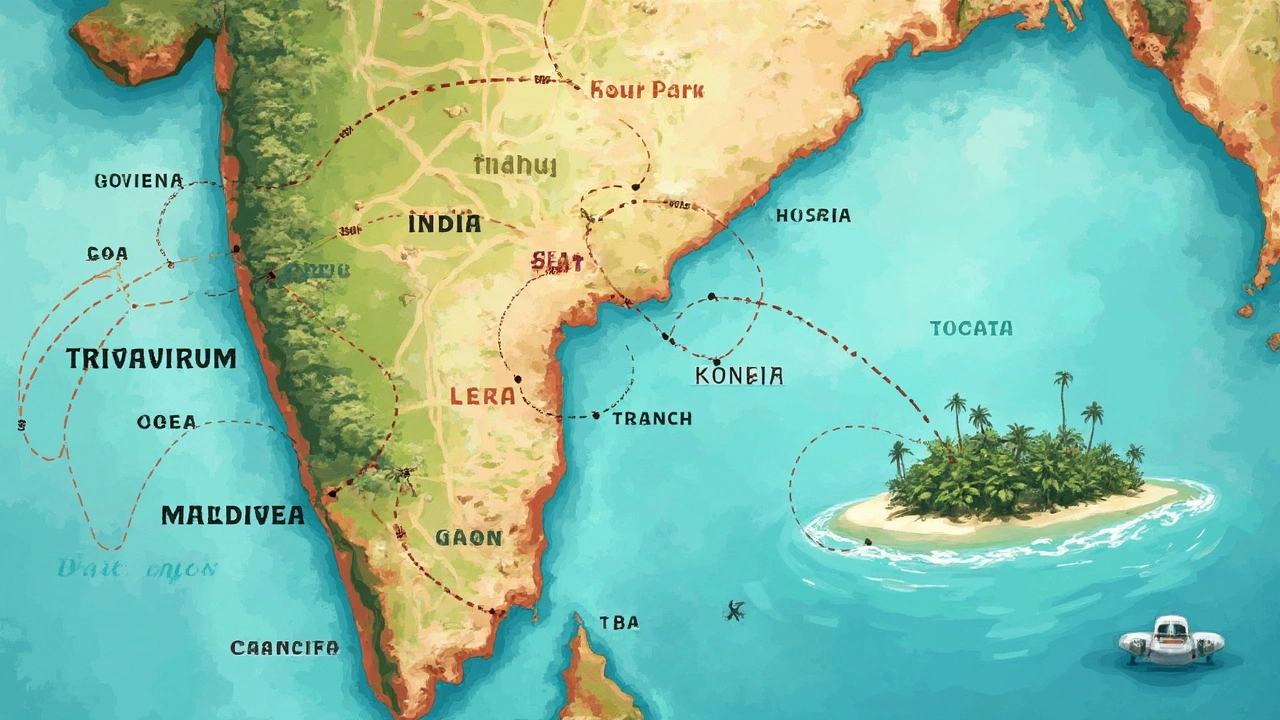SEARCH
Travel to Maldives – What You Need to Know Before You Book
Imagine stepping onto powder‑white sand, the sea so clear you can see every fish. That’s the Maldives in a nutshell, but getting there right takes a bit of planning. Let’s break down the basics so you can enjoy the islands without surprise costs.
Budgeting Your Maldives Getaway
First, figure out how much you’ll actually spend. Flights from India to Malé usually range from ₹15,000 to ₹30,000 round‑trip, depending on the season. Book early and keep an eye on sales – Tuesdays often have the best fares.
Accommodation is the biggest line item. Luxury resorts can cost ₹20,000 per night, while guesthouses on local islands start around ₹3,000. A smart move is to split your stay: a few nights in a resort for the over‑water experience, then a couple of nights in a guesthouse to keep the budget in check.
Food can be cheap if you eat at local cafés – expect ₹250‑₹500 for a tasty rice‑based meal. Resort dining is pricier, so plan a few meals off‑resort and use the hotel’s kitchen if you stay in a villa with a kitchenette.
Don’t forget extras: airport transfers (seaplane ₹7,000‑₹15,000 or speedboat ₹2,000), activities like snorkeling or dolphin watching (₹2,000‑₹5,000), and a small tip for staff. Adding these together, a comfortable week for two can be done for about ₹1,50,000 if you mix luxury and local experiences.
Island Alternatives to Consider
If the price tag feels too high, try the Indian Ocean’s hidden gems. Lakshadweep offers similar blue waters and coral reefs, but you’ll spend far less on flights and accommodation. Guesthouses on Bangaram or Kadmat Island start at ₹2,500 a night, and you still get that pristine beach vibe.
Another option is the “Mini Maldives” of India – places like Kumarakom in Kerala or the Andaman’s Havelock Island. While the scenery isn’t identical, you’ll find turquoise lagoons, great snorkeling, and a fraction of the cost. A week there can be under ₹80,000 including travel from major Indian cities.
For those who still want the Maldives feel but want to save, look for lesser‑known atolls like Raa or Laamu. These islands have fewer tourists, lower resort rates, and the same crystal water. Booking a package that bundles flight, transfer, and stay often gives the best value.
When you decide, check the visa rules. Indian tourists get a free 30‑day visa on arrival, but make sure your passport is valid for at least six months. Keep a copy of your travel insurance handy – it’s required for the visa form.
Timing matters too. The dry season (November to April) offers the best weather, but prices peak. If you can travel in May or October, you’ll enjoy fewer crowds and lower rates, with only a slight chance of a rain shower.
Finally, pack smart. Bring reef‑safe sunscreen, light clothing, and a reusable water bottle. Most resorts provide bottled water, but having your own reduces waste and costs.
Whether you choose the iconic Maldives, Lakshadweep, or a Mini Maldives spot in India, the key is balancing dream experiences with realistic budgeting. Plan ahead, mix luxury with local stays, and you’ll get the island escape you’ve always wanted without breaking the bank.

Which Indian City Is Closest to Maldives? Find Out Before You Book
Looking for the fastest way to get to the Maldives from India? This article breaks down which Indian city is physically closest to the Maldives, why that matters, and tips for booking flights. We’ll also share quick facts, flight costs, and clever ways to maximize your beach vacation. If you’re comparing Goa, Kochi, Trivandrum or Chennai, this article will clear things up. Expect real info to help plan your perfect island getaway.
Continue reading